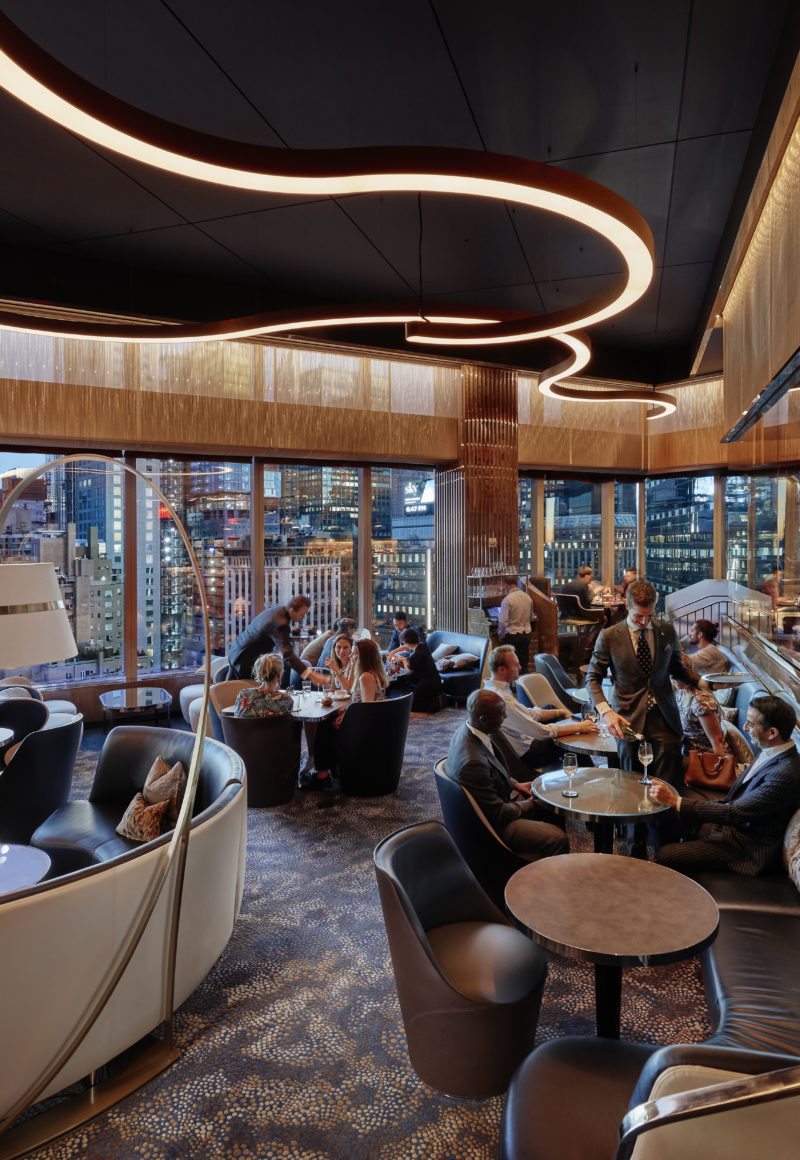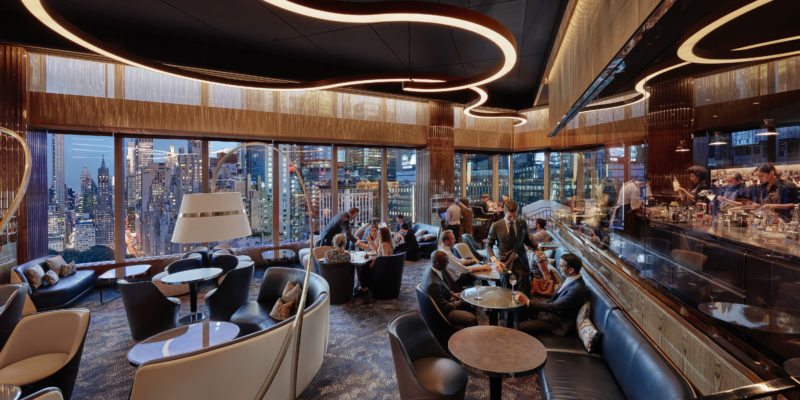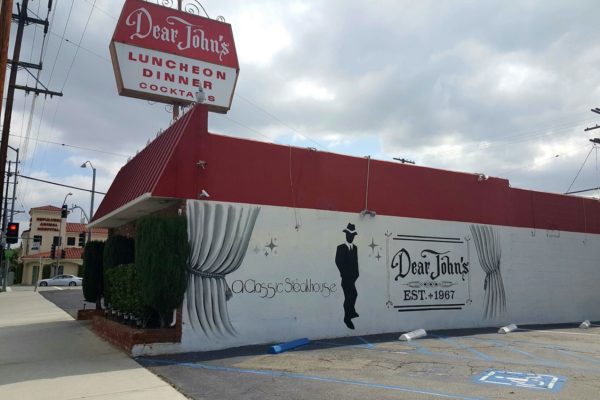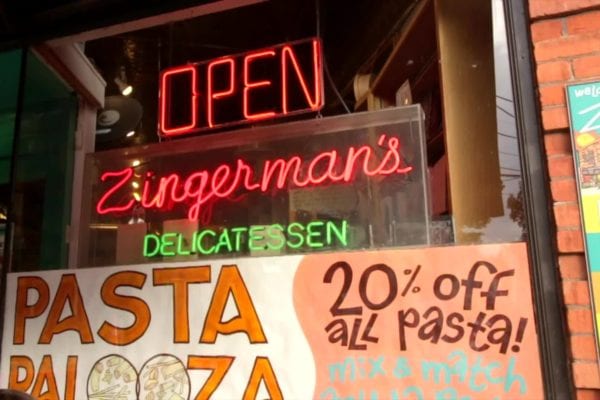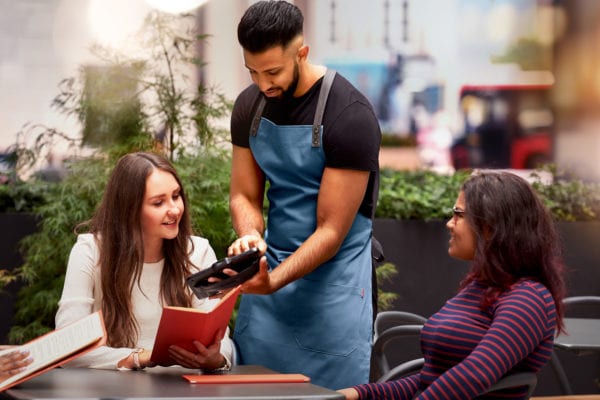Skift Take
Distinctive elements will dominate in restaurant design through 2018. Bold color choices, stand-out patterns, text-heavy neon signage, and witty branding will shape identities for new spaces, and the perceptions of those who experience them— virtually or otherwise.
— Ally Spier

We’ve just released our first annual restaurant industry trends forecast, Skift Megatrends 2018. You can read about each of the trends on Skift Table as well as download a copy of our magazine here.
Sorry, Mies, but when it comes to modern restaurant design, less is not more. At least not now, in these Instagram-driven times.
Like it or not, the potential ability to stand out via snapshot on someone’s feed has become a key factor in design conception for in-development restaurants. A picture may still be worth a thousand words, but its ability to attract virtual attention and, subsequently, a real-life following, is of even greater value now.
Michael Romero, managing director of L.A.-based creative agency Manufactur (pronounced as though the “e” never left), explains: “Instagram is the platform and vehicle by which restaurants are able to reach a broad audience without billboards.”
What better way to stand out on a visual platform than through intentionally showy design elements?
Distinctive Design
When design is a branding strategy, the interior space as a whole, or specific elements of it, are often developed with hopes of being Instagrammable, appealing to a quick social post. Romero notes, “whether it’s neon, or a certain pattern, or clever quotes, or a cool menu, the brands have been zeroing in on that strategy.”
Take a cursory tour of any major food influencer’s account worth its weight in acai bowls, and you’ll surely come across a recently-erected neon sign. Maybe the insistent “You Batter Believe it!” of Sweets by Chloe, or the appreciative “Matcha Gracias” of Cha Cha Matcha? Romero explains that there’s been a “big movement in the restaurant industry to bring back what was ‘cool’ from a vintage standpoint.” Neon often fits the bill, for its ability to help craft a specific brand story, because it’s not very expensive, and for its nostalgic appeal. Yep, even when sending digital photos of a place that just opened to a global audience through our smartphones, we still want our physical spaces to evoke a comfortingly old-timey, vintage feel. Or, maybe it’s precisely because of tech’s ubiquity that we appreciate environments reminiscent of simpler times. The dichotomy is worthy of consideration, anyway: perhaps restaurant design a few years from now will have regressed even further into the stylistic past, and we’ll transmit our orders via microchip to our robotic waitstaff at Medieval Times-esque banquet halls? But for now, it’s nostalgia by neon.
David Ablon, technical director at Brooklyn Glass, a studio and custom fabrication house behind some of the signage for Kate Spade stores and restaurateur Keith McNally’s restaurant group, confirms there’s been an increase in demand for custom-made neon signage in the last couple of years. Customers want more writing, often in different fonts, and prefer white lettering much more than they have in the past. Ablon cites another important difference between the signs his studio makes for clients today versus those of the ‘80s, though: there’s less explicit advertising of what a place is, or what it offers. Instead, signs are more idea- or pun-oriented. What’s that old saying? All words and no play make…less effective marketing?
Bright Lights
While white neon lighting currently reigns supreme, restaurants’ commitment to bold color choices in other aspects of branding and design likely won’t diminish anytime soon. But expect the pervasive millennial pink and its more saturated cousins (whether at London’s Sketch, NYC’S Pietro, or LA’s Alfred Tea Room) to begin to be ousted by shades of purple, as long as they’re still filter-friendly. Harpers Bazaar, Elle, and InStyle all note the abundance of lavender on the spring 2018 runway (including at Tom Ford, Victoria Beckham, and the Row). Even Pantone’s 2018 color of the year is “Ultra Violet” (no sunscreen required).
If designers are to appeal to the social media savvy in every way, they can’t forget to look up. And so lighting in restaurants to come can be increasingly expected to make a statement through memorable ceiling fixtures, too. The recently-opened NYC location of Alinea Group’s The Aviary, for example, includes distinctive ribbon-like swirls of light that span the length of the entire room, and are carried over as a motif on the cocktail bar’s website. (You can even see them from street level in Columbus Circle, 35 floors below.)
As long as a strong Instagram presence acts as a means of viral marketing and effortless publicity, branding and design teams will continue to base their aesthetic decisions on how they’ll ultimately manifest on social media. The physical designs of new restaurants will be accomplished with the goal of gaining visibility on a broader scale for the foreseeable future.
Skift Table contributor Ally Spier is a Brooklyn-based writer and designer who studied ergonomics at Cornell, and architecture at Pratt. Her background in design informs her love of food and travel… and vice versa.
Download Your Copy of Skift Megatrends 2018
This year’s Megatrends are sponsored by our partners at AccorHotels, Allianz Worldwide Partners, Hilton Garden Inn, Intrepid Travel, onefinestay, and Upside.

